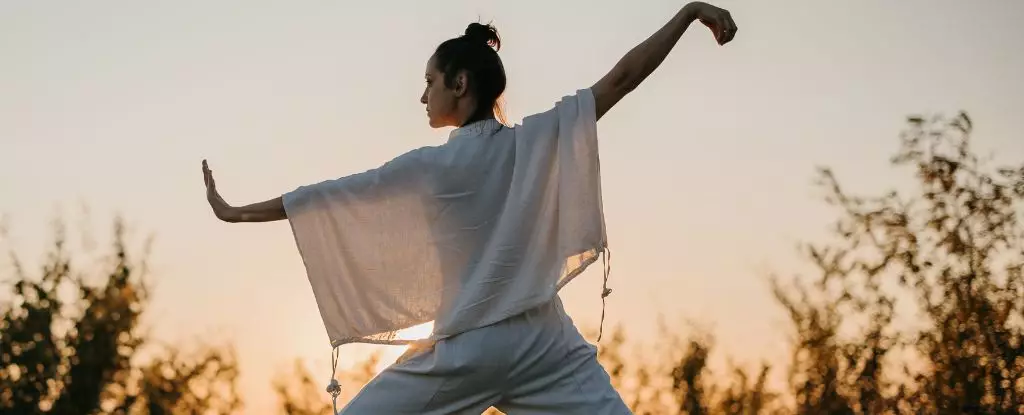Insomnia remains the most pervasive sleep disorder, affecting a significant portion of the adult population worldwide. Despite the myriad of pills and therapies available, a startling reality persists: many individuals continue to grapple with restless nights and inadequate sleep. This enduring challenge beckons a reevaluation of accessible, non-pharmacological solutions. Recent research sheds new light on how straightforward physical activities—often dismissed as too trivial or superficial—can play a transformative role in restoring restful sleep. The striking insight? You don’t need expensive gadgets or intensive routines; modest, everyday exercises might be your best allies in overcoming insomnia.
Empowering Simplicity: The Power of Low-Impact Exercises
The comprehensive study assembled data from over a thousand participants across numerous controlled trials, revealing an encouraging correlation: exercise, regardless of type, reduces the severity of insomnia. But more crucially, it identifies specific activities—yoga, Tai Chi, walking, and jogging—that stand out due to their ease, affordability, and proven benefits. This nuanced approach is refreshing because it democratizes the journey toward better sleep, emphasizing that health-enhancing behaviors need not be costly or complex. Instead, they can be integrated seamlessly into daily life.
What emerges from the analysis is not just a general endorsement of physical activity but a targeted recommendation for activities that simultaneously nurture physical relaxation and mental tranquility. For example, yoga’s gentle stretching combined with mindful breathing appears to influence brain chemistry—enhancing GABAergic activity, which promotes calmness and sleep readiness. Tai Chi, often revered as “meditation in motion,” demonstrates enduring benefits by improving sleep architecture over time. These practices seem to modulate neurophysiological pathways, reducing anxiety and hyperactivation of the amygdala—culprits often behind sleep initiation problems.
Meanwhile, more traditional activities such as walking and jogging—often viewed merely as cardiovascular exercises—are now recognized for their role in boosting melatonin production, thereby facilitating natural sleep processes and reducing daytime fatigue. This highlights an important principle: physical activity influences multiple biological systems that regulate sleep, which makes the case for incorporating diverse but manageable exercises into your routine.
The Subtle Science Behind Exercise and Sleep
While the connection between physical activity and sleep has been accepted broadly, what distinguishes this research is its focus on the type and quality of movement. The degree of long-term benefit observed with Tai Chi is particularly striking. Participants experienced shorter times to fall asleep, improved sleep quality, and an average of 50 extra minutes of sleep—an astonishing figure in the realm of sleep research.
This suggests that the mind-body harmony cultivated through these practices may be particularly potent in normalizing sleep cycles. Yoga, with its emphasis on controlled breathing, mindfulness, and body awareness, acts as a conduit to relax the nervous system, mitigating the hyperarousal that often perpetuates insomnia. Scientific evidence points toward neurochemical changes—like increased GABA levels—that not only promote sleep but also alleviate anxiety and depressive symptoms often intertwined with sleep disturbances.
It’s tempting to view these activities as mere “feel-good” interventions, but the data indicates they have tangible, measurable effects on sleep architecture and duration. This can be a game-changer for individuals wary of dependency on medications or invasive treatments. Engaging in these practices offers a sustainable, empowering way to take control of one’s sleep health.
Beyond Sleep: The Broader Benefits and Future Implications
The importance of quality sleep extends beyond feeling rested; it’s a cornerstone of overall health. Chronic insomnia is linked to an increased risk of cognitive decline, psychological disorders, and even certain chronic illnesses. Therefore, interventions that reduce insomnia severity can have profound cascading effects on long-term health outcomes.
What’s compelling about the study’s findings is the potential for personalized treatment strategies. Not everyone responds equally to medications or traditional therapies, but aligning exercise choices with individual preferences and lifestyles can improve adherence and effectiveness. For busy professionals or those on a budget, walking or yoga offers a feasible, low-entry barrier path to better sleep.
Moreover, integrating these practices into holistic health routines not only addresses insomnia but can foster a deeper sense of well-being, stress resilience, and vitality. Hence, the act of moving—be it a mindful Tai Chi session or a brisk walk—becomes a form of self-care that nourishes both body and mind.
This research invites healthcare providers to reconsider the efficacy of recommending simple exercise routines as frontline interventions for insomnia. It champions a shift—from viewing sleep problems solely through the lens of pharmaceuticals to embracing accessible lifestyle modifications that empower individuals to reclaim restful nights. As society grapples with the pervasive impacts of sleep deprivation, embracing these modest yet powerful exercises could redefine our approach to achieving restorative sleep, one step—or stretch—at a time.

